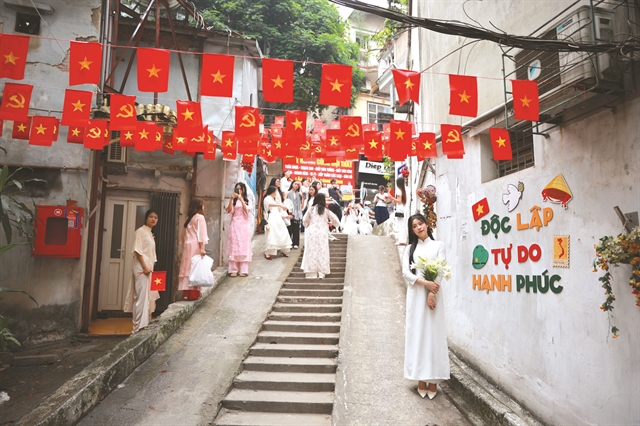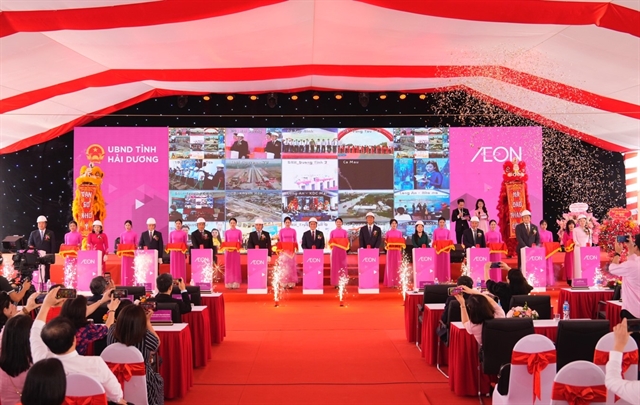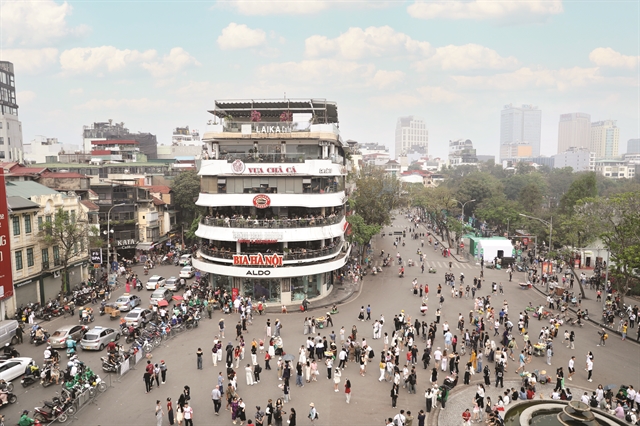 Sunday/Weekend
Sunday/Weekend

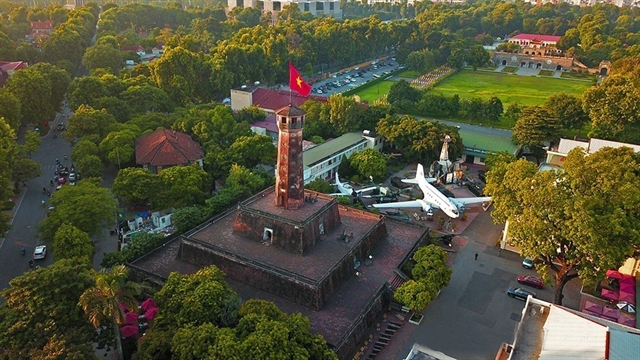 |
| An aerial view of Hà Nội Flag Tower. VNA/VNS Photo Minh Đức |
A resident on Trần Phú Street, adjacent to the Hà Nội Flag Tower, Nguyễn Thị Bích, has recently become one of the first visitors to explore the capital’s landmark, which opened to the public at the beginning of this year.
“I’m overwhelmed with excitement and proud to visit Hà Nội’s Flag Tower for the first time. I walked past the heritage relic every day but have never been inside,” she said. “Every corner of the site is beautiful and rich with historical significance.”
The opening of the tower has also attracted the interest of international tourists keen to learn more about Hà Nội’s history. The ticket price starts at VNĐ100,000 per person (US$4.35). It is open for visits from 8am to 5pm every day of the week.
“I had a chance to look closely at this tower, and it was a marvel of architecture. There are great views and a good spot to relax,” said Matteo Romano, a tourist from Italy.
Constructed from 1805 to 1812 during the Nguyễn Dynasty (1802-1945), the Hà Nội Flag Tower was previously included within the property of the Vietnam Military History Museum. But it has now become part of the Imperial Citadel of Thăng Long after the museum was relocated to another location last December.
Structure
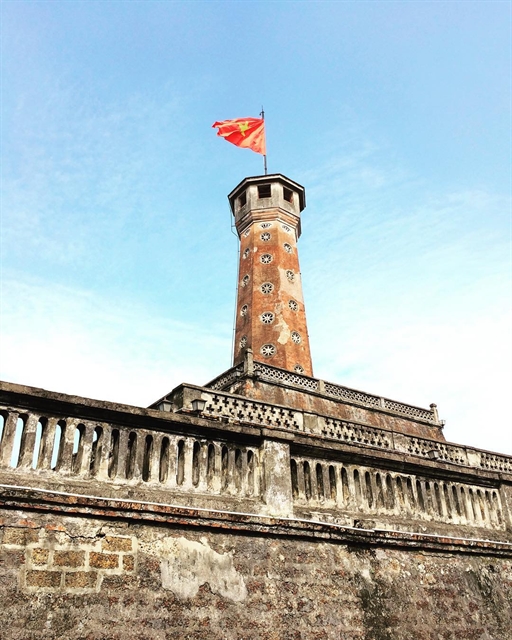 |
| A close-up view of Hà Nội Flag Tower. Photo tuoitrethudo.vn |
The Hà Nội Flag Tower is the most intact and impressive structure within the complex of the Imperial Citadel of Thăng Long.
From the entrance, visitors can admire the full shape of the sturdy and graceful tower. The structure stands 33 metres tall, reaching 44 metres including the flagpole. It consists of three tiers of a truncated square pyramid that gradually decrease in size, topped by a tall tower that stretches skyward.
The first tier has a side length of 42.5m, a height of 3.1m, and two brick staircases. The second tier has a side length of 27m, a height of 3.7m, and four doors facing four directions.
Except for the north door, the other three are inscribed with two characters relevant to their direction: East door – Nghênh Húc (To Welcome Dawn’s Sunlight), South door – Hướng Minh (Directed to the Sunlight), and West door – Hồi Quang (To Reflect Light).
The third tier is a square floor with each side measuring 12.5m and a height of 5.1m. There is a spiral staircase leading from the first to the third tier.
The rooftop of the third tier is surrounded by a railing, with the flagpole standing vertically, adorned with floral patterns interwoven in a hexagonal design.
A unique feature of the Hà Nội Flag Tower is that even on the hottest days, the atmosphere inside remains pleasantly cool. The architectural design of the doors is so effective that not a drop of rainwater can enter, no matter how heavy the downpour.
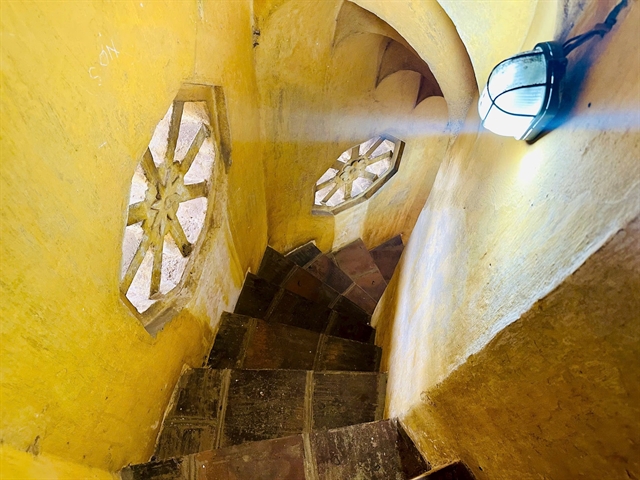 |
| The narrow staircase inside the tower. Photo hanoimoi.vn |
From the observation deck, visitors can gaze across the ancient Thăng Long Citadel, taking in views of Đoan Môn (the main gate), the North Gate relic, Hồ Chí Minh Mausoleum, and Hoàn Kiếm (Sword) Lake.
Historical witness
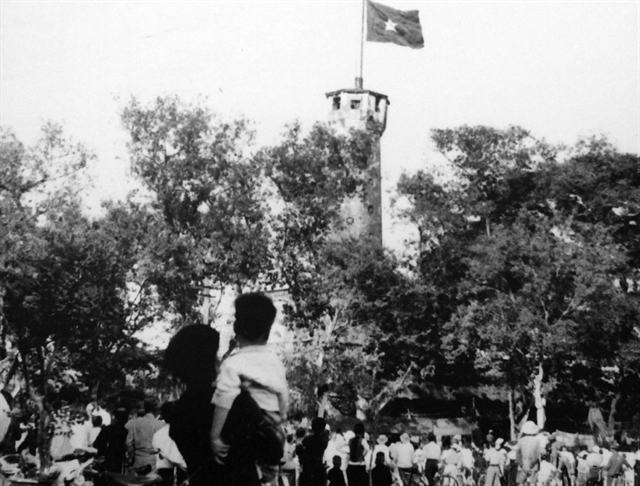 |
| A file photo shows Hà Nội Flag Tower in 1906. |
The Hà Nội Flag Tower is one of the few architectural works within the Hà Nội Citadel that fortunately remained intact after the destruction by French colonialists between 1894 and 1897.
The flag tower witnessed two battles between Nguyễn dynasty soldiers and French colonial forces—first in 1873 and again in 1882. The French troops captured this location and used it as a military base, employing the flagpole as an observation post throughout the Vietnamese resistance movement against the French.
A photograph taken in 1890 by Louis Sadoul, a French military officer, shows that the area of present-day Lenin Monument Garden near the foot of the flag tower was once a pond for elephants used by the Nguyễn Dynasty. It also reveals that the French had erected semi-permanent barracks on the tower's ramparts for their troops.
The national flag of modern Việt Nam flew at the top of the Hà Nội Flag Tower for the first time on October 10, 1954, when Hanoians jubilantly celebrated the liberation of the capital city from the French.
The tower also served as an observation post for Hà Nội’s air defence force during the American war of destruction against North Việt Nam.
The image of the Hà Nội Flag Tower was prominently featured on the first banknote issued by the State Bank of Việt Nam in 1958.
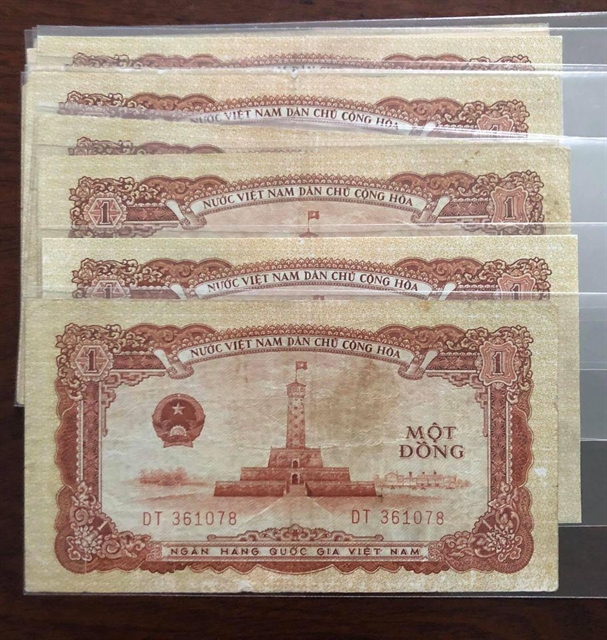 |
| The image of the Hà Nội Flag Tower was prominently featured on the first banknote issued by the State Bank of Việt Nam in 1958. Photo dichvusuutam.com |
For more than half a century, the red flag with a five-pointed gold star has flown proudly at the top of the Hà Nội Flag Tower, soaring against the backdrop of the ancient Thăng Long-Hà Nội, a city rich in culture and history. This flag remains a symbol of glory and pride for the Vietnamese people and their independent, free homeland.
Due to its historical value, the Hà Nội Flag Tower was recognised as a national historical heritage site in 1989.
Tourist attraction
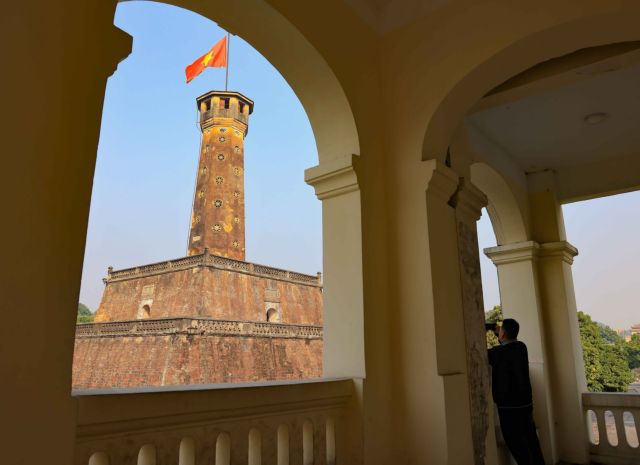 |
| Hà Nội Flag Tower is an iconic landmark and a must-visit destination in Hà Nội. VNA/VNS Photo Thanh Tùng |
In the early days of its opening to the public, the Hà Nội Flag Tower welcomed over 10,000 visitors each day.
Nguyễn Thanh Quang, director of the Thăng Long-Hà Nội Heritage Conservation Centre, said the opening of the flag tower is part of a strategy to preserve and promote the heritage of the Thăng Long Imperial Citadel.
Tour routes connecting the tower to other historical heritage sites within the Imperial Citadel will soon be launched, along with the installation of projection technology and lighting, he said, adding that these efforts would enhance the value of the heritage site and attract more tourists. VNS




